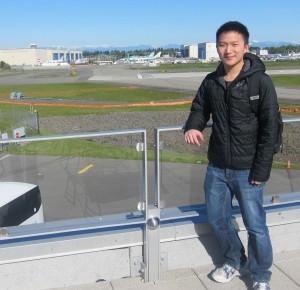Present your brainstorming ideas for the project and the techniques you are using to choose one idea over another. Present the overview time-line and milestones leading to project completion.
The purpose of this project is to conduct a 2 hour exercise that relays “windshield” damage assessment information in an earthquake and other situational awareness from field units to dispatches and emergency operations centres. NSEMO’s role is to raise awareness of roles, responsibilities and best practices with the staff that obtain, relay and prioritize damage assessment information. They also want to evaluate the effectiveness of communications platforms from the field to the appropriate level of emergency operations centre.
Our role is to create injects that describe or show what the field personnel see, describe the conversations that they have, and relate information from made up phone or radio calls. The field teams are not supposed to receive instructions on what to do with the information we give them. Injects can be written, doctored pictures or videos and they need to target critical infrastructure such as hospital, transportation systems, manufacturing plants and so on. Critical infrastructure is defined as the processes, systems, facilities, technologies, networks, assets and services essential to the health, safety, security or economic well-being of Canadians and the effective functioning of government.
Injects should display damage that is to be expected in a V-VI level earthquake in the Richter scale, so it should not be too catastrophic. Also, our team will avoid injuries and deaths as well as personal impacts. Major secondary incidents, such as landslides and tsunamis, will not be included in injects in order to stay within the scope of the project.
With that in mind, our team started brainstorming ideas for the project. Our goal is to come up with around 50 injects, which will be split between two teams. At first the ideas started rolling. We considered types of earthquake damage, such as:
- Cracks in roads and buildings
- Collapsed powerlines
- Plumes of smoke from manufacturing plants
- Small landslides and road lls
- Cracking pipelines
- Ground fissures
- Power loss
- Terminal access cut off at the ferry
- Car accidents …
We then thought of places where the damage would occur, and came up with places such as:
- Bridges (Seymour and Lions Gate)
- Refineries
- Community centres
- Hospitals
- Gas Stations
- Emergency Response Routes
- Ferry terminals
- Marinas …
Our team wants a large variety of injects, so it was important for us to think of different ways an earthquake can cause damage. We also plan on using different types of damage that occur in the same place. For example, we can block the ferry terminal and cause minor damage to the marina.
The general timeline of our projects is supposed to follow along these lines:
With these guidelines in mind, our team is prepared for the tasks at hand.







